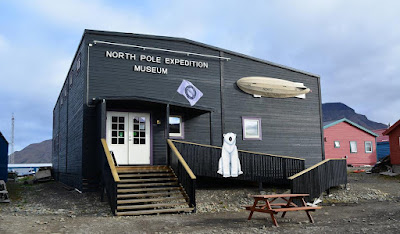National Portrait Gallery entrance
Planning permission was granted by Westminster City Council to launch the best redevelopment project in the Gallery’s long history, the Inspiring People Project. The refurbishment was designed by Jamie Fobert Architects in partnership with Purcell. £31.5 million had already been raised out of the £35.5 million target, so the work commenced on time in 2020.
National Portrait Gallery, display area
The new entrance and forecourt on the Gallery's North Façade created a more welcoming entrance and relieved the existing congestion. Three windows were altered to form doorways leading to a new, open entrance hall, which linked with the Ondaatje Wing Main Hall and better connected the building. The forecourt was to be a great civic space for both the public and for Gallery visitors.
The East Wing of the Gallery, part of the historical 1896 building, was re-opened to the public in 2023. This included converting the office space back into impressive top-lit galleries on the first floor. The ground floor and basement levels were re-done, providing a flexible space with its own dedicated entrance and the extension of the vaulted Portrait Café. The project improved the quality of education at the Gallery via a much-improved Learning Centre.
Today, the gallery has 11,000+ works in its collection. So the project had to improve accessibility to the entire collection as well as upgrading the gallery spaces, while celebrating the existing architecture and decorative features. Maintaining a chronological approach, this project displayed works that were relevant to a wider range of audiences and presented missing or hidden stories from British history. Set amongst the Gallery’s best-loved paintings were more works from the collection of 250,000 photos, from 1840 to now.
For the first 100+ years of its existence, The National Portrait Gallery in London had no contemporary collection at all. Although the total display space remains about the same, contemporary and C20th portraits, which were often displaced or moved because of temporary exhibitions in the past, will be more consistently displayed in the future.
This redevelopment will better display contemporary works. So I have created links to some of my favourites: royalty, East End of London, and Cecil Beaton. Nonetheless I have selected five of the old favourites that visitors to the Portrait Gallery have loved the most.
Chandos Portrait of William Shakespeare
The Chandos Portrait of William Shakespeare (1600-10) was named after the Dukes of Chandos who used to own the painting. It is the only artwork considered by experts to have been painted of the playwright during his lifetime. It was the first painting donated to London’s National Portrait Gallery when it was founded in 1856.
Queen Elizabeth I (reigned 1558-1603), daughter of King Henry VIII, nearly didn’t become Queen at all. But when she did, she rallied her troops to fight off the Spanish Armada. She ruled for 44 years, never married, and fixed viewers on this painting with an authoritarian stare and her masculine-style doublet. This portrait (c1575) was painted by an unknown English artist.
Lord Byron (1788-1824) was painted by Thomas Phillips in c1835, presumably based on a painting done in Byron’s lifetime. The Romantic poet/politician travelled the world, became a Greek national hero after fighting the Ottoman Empire, had affairs with many women, died at just 36 and was famously summed up by lover Lady Caroline Lamb as “mad, bad and dangerous to know”. Byron sat for this portrait wearing Albanian dress, the portrait being recommended by his contemporaries for its likeness.
Lord Byron by Peter Phillips
self-portrait of Sir Anthony van Dyck
The self-portrait of Sir Anthony van Dyck c1640, one of just three by the Flemish artist, was saved for the nation in 2014. The attention to detail brought a piercing realism to his face, a contrast to the broader strokes on his dress. This disparity suggested either that the painting was unfinished, or that Van Dyck was experimenting with his use of paint in this informal work.
The portrait of Thomas Carlyle was painted by Sir John Everett Millais 1877. Carlyle was one of the great C19th intellects whose history and philosophy were very influential. His harsh criticisms and uncertain temper became legendary. This recognised literary leader eulogised heroes and strong governments, mistrusted technological progress and analysed the class struggle brilliantly. Carlyle was a co-founder of the National Portrait Gallery. Exasperated by the continued denial of women’s right to vote, suffragettes attacked museums and galleries in order to draw attention to their cause. In July 1914 his portrait was attacked with a meat cleaver by suffragette Anne Hunt. She was sentenced to six months in gaol, but was released early.
Thomas Carlyle, by Sir John Everett Millais 1877
The National Portrait Gallery had to remain closed during this major redevelopment project, re-opening in 2023.


























































.png)





























.jpg)


















